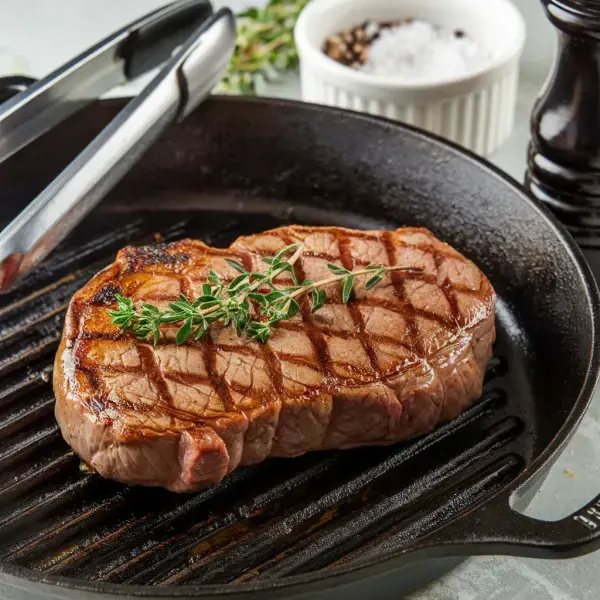
 80 minutes
80 minutesA guide to creating a perfectly grilled steak with a rich, savory crust and a juicy interior.


Rib-eye steak, trimmed
0 oz
Salt, sprinkled
teaspoons
Black Pepper, freshly ground
teaspoons
Fresh Thyme, optional
teaspoons
Olive Oil, drizzled
tablespoons
1. Prepare the Steak
Begin by trimming the fat from the steak, leaving a quarter-inch layer for flavor. Season the steak generously with salt and freshly ground black pepper. Optionally, add fresh thyme. Drizzle olive oil over the steak to help the seasoning adhere and contribute to the crust. Let the seasoned steak rest for 1 hour to absorb the flavors.
2. Preheat and Prepare the Grill
Preheat the grill to high heat. Clean the grates thoroughly with a wire brush and oil them lightly to prevent sticking.
3. Grill the Steak
Place the steak on the hot grill and cook for 2-3 minutes. Rotate it 90 degrees and continue grilling for another 2-3 minutes. Flip the steak to the second side and repeat the process: grill for 2-3 minutes, rotate, and cook for another couple of minutes. Check for doneness by firmness or with a meat thermometer.
4. Rest and Serve
Once the steak is grilled to your liking, remove it from the heat and let it rest on a plate for a few minutes to allow the juices to redistribute. Serve hot.
Generously season with kosher salt and freshly ground black pepper at least 40 minutes before grilling to enhance flavor and tenderness.
Rest the steak for 5-10 minutes after grilling to allow juices to redistribute, resulting in a juicier steak.
Set up a hot zone for searing and a cooler zone on the grill to finish cooking the steak to the desired doneness.
Select high-quality cuts like ribeye, strip, or filet mignon with good marbling. Aim for USDA Prime or Choice grades.
Use an instant-read thermometer to check for doneness, aiming for 120-125°F for rare, 130-135°F for medium-rare, and 140-145°F for medium.




Comments (0)